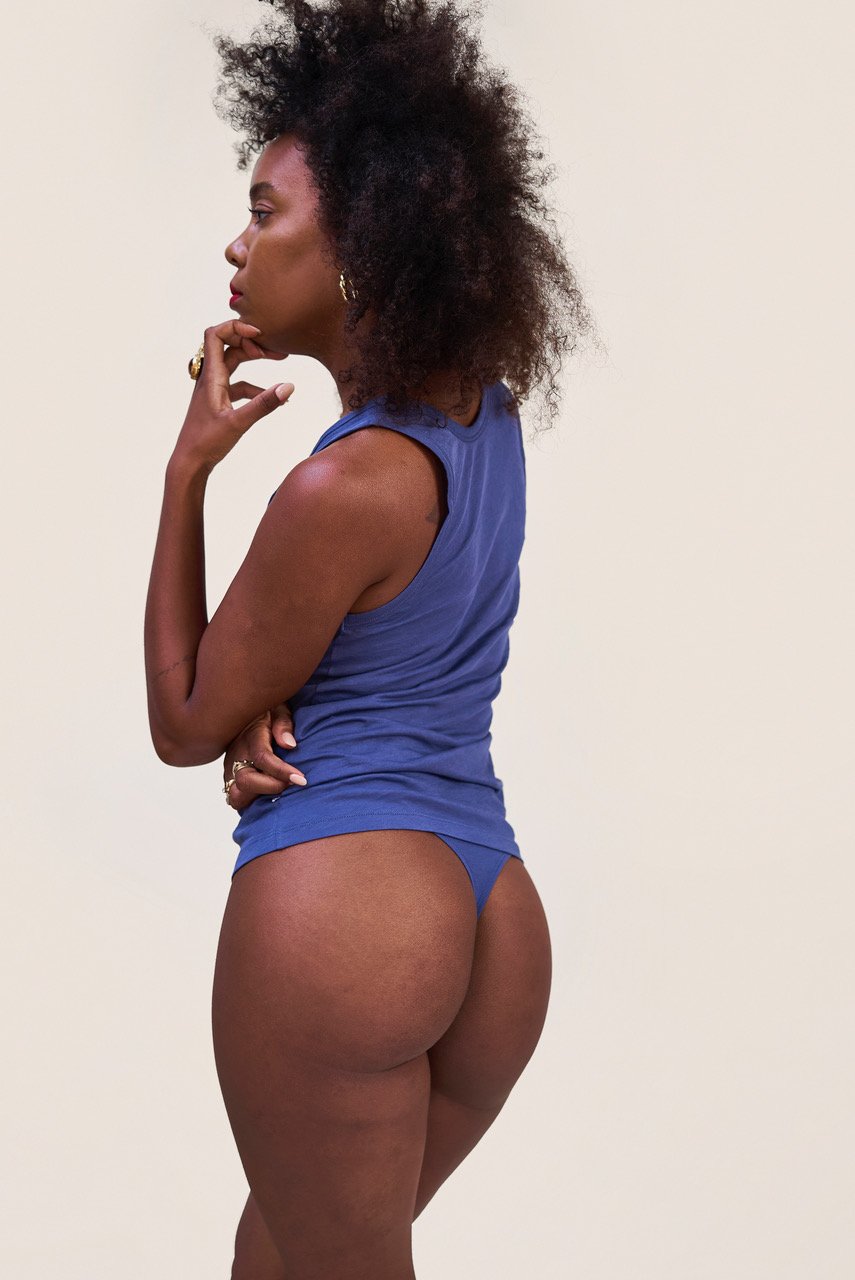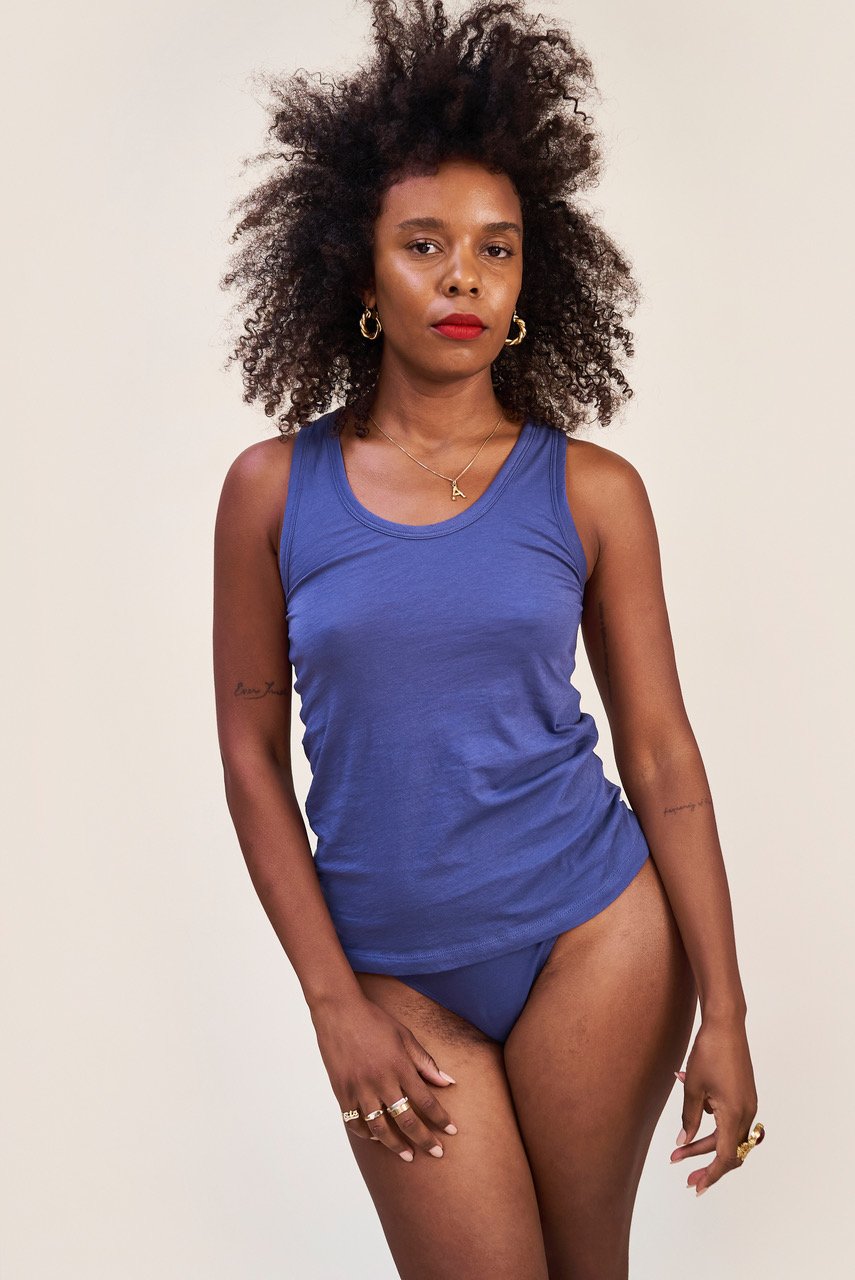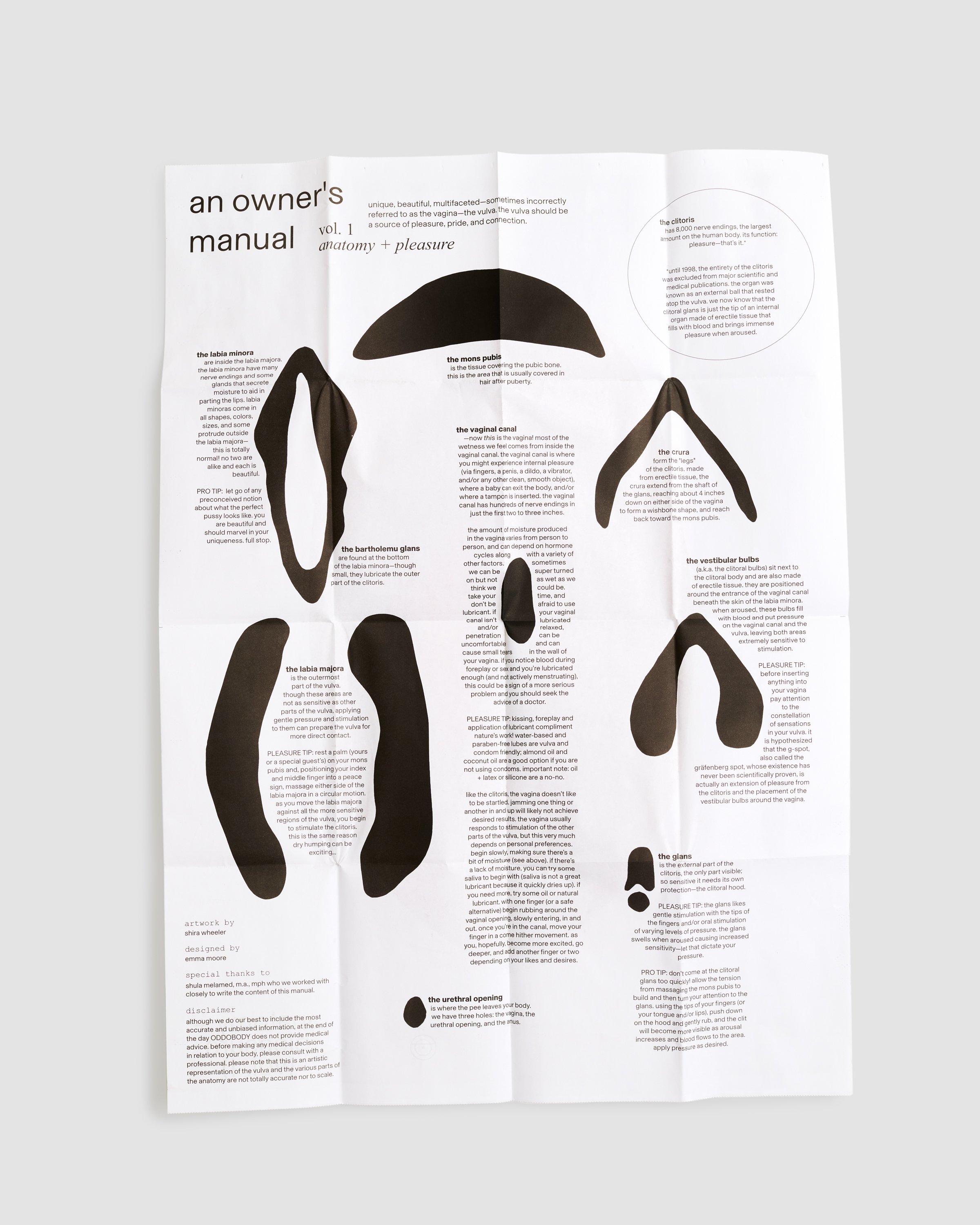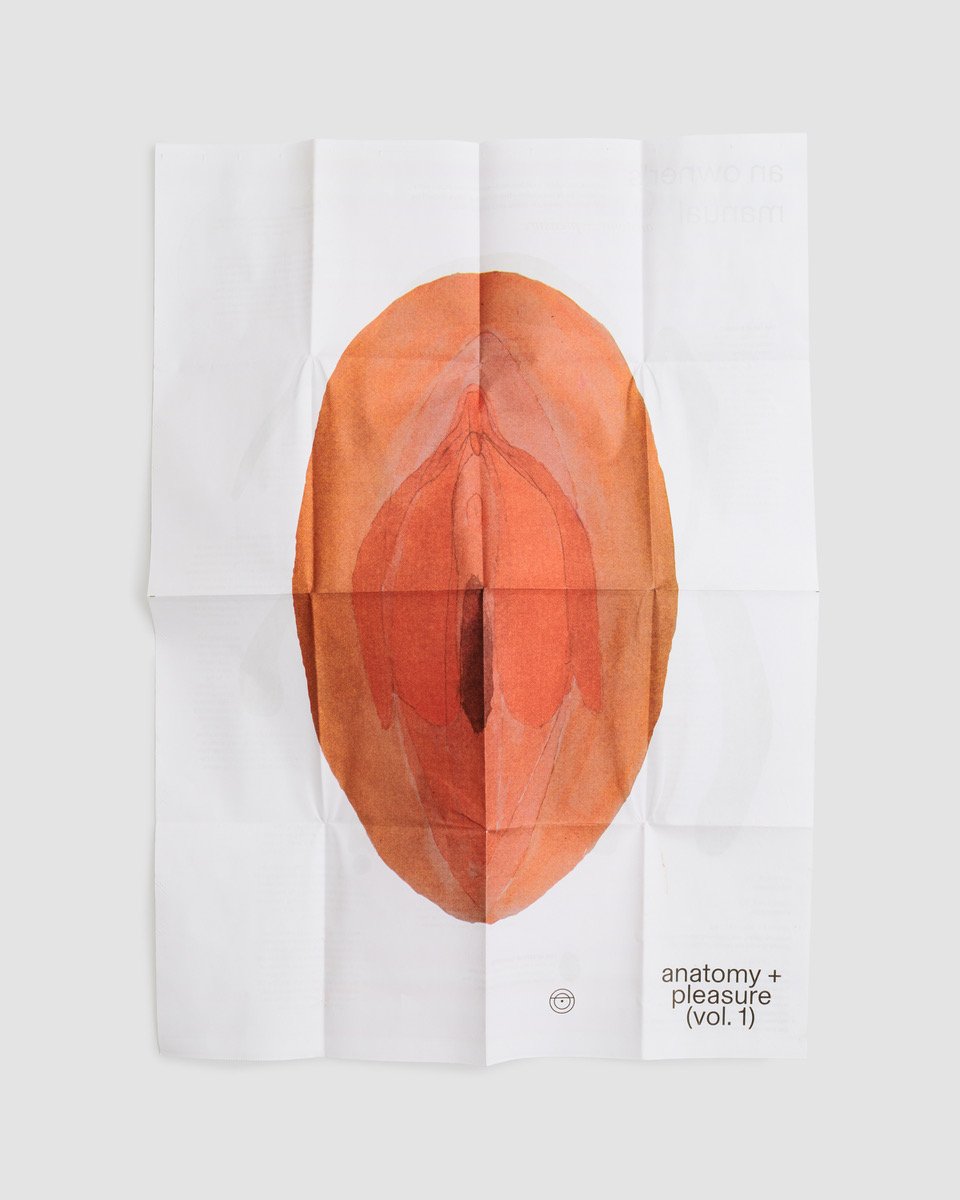ODDOBODY is more than an underwear brand. Founders Shira Wheeler and Abigail Gerow set out to create 100% organic cotton underwear that not only feels good on your skin but also has the potential to educate you and your children about health and bodily autonomy.
I was excited to learn that ODDOBODY orders come with a beautiful printed poster featuring a specific theme to educate you about your menstrual cycle, how to care for your vulva, exercises to strengthen your pelvic floor, and more! Instead of all the marketing materials that you throw away, the posters themselves are large and visually engaging. I immediately wanted to tack them to my wall. With earth-toned graphics and studio photography, they’re reminiscent of DIY feminist zines from the 70s. Truly a delight.
ODDOBODY makes comfortable underwear and they do it in style. Setting themselves apart by adding editorial education and a mission that hopes to empower and create better health outcomes for their shoppers. What is the responsibility of a brand? Are we to one day expect our favorite fashion and skincare brands to educate us on what we’re putting on or in our bodies? Can we hold them accountable for how they treat the earth?
We spoke to the founders of ODDOBODY about these questions, their work, the intention behind their educational materials, and creating a responsible underwear line for all.
“In some ways we see our manuals as body propaganda— inspiring important conversations amongst ourselves, to ask questions and spark curiosity to understand our own bodies.”
Can you tell us about your mission and what made you want to start ODDOBODY?
We started with our mom’s advice to “always wear 100% cotton underwear” and the search for something simple, attractive and elevated in the lingerie space. This of course led to some questions. Initially, we wanted to understand “why 100% cotton?” Once we discovered the vagina to be this incredible microbiome, we, of course, had more questions, a pandora’s box, if you will. The pivotal moment came when we read that the clitoris has internal bulbs. The fact that we didn’t know this as 30 year old women wasn’t that surprising, considering that the entirety of clitoral anatomy has been intentionally removed from scientific literature for a couple of hundred years until 1998. A female organ designed purely for pleasure wasn’t deemed a necessary part of anatomy class. This was the spark that ignited us—to know more about our bodies; to use something as obvious as everyday underwear to connect us and to act as a vehicle to distribute information.
Underwear is the entry point —it’s been so cool to see people light up when we say, “We have an underwear company!” Underwear is fun! It’s the first thing you put on in the morning and the last thing you take off at night. Underwear can often be reflective of how you feel in your own skin; the feeling that you carry through with you to the end of your day [the underwear you choose for an important meeting, a steamy date, to lounge around the house in]. What better vehicle to start these conversations around basic body knowledge?!
The harms of fast fashion have been such a huge topic lately. What sustainability practices do you uphold to protect the environment?
Sustainability was foundational to the brand from the start. It should be for any new brand! We don’t really think of ourselves as a fashion brand, so we don’t subscribe to seasonality. We were very intentional in using organic cotton, which uses significantly less water than conventional cotton. 100% cotton is best for vaginal health because of its breathability, but also having no plastics in the cotton is important from an environmental perspective as well—microplastics have been on our radar for a while now. All our packaging is paper, which is ideal for recycling, and we try to be thoughtful about the amount of marketing materials we include in each order. As a small business, making decisions based on sustainability can be costly, but fortunately it matters to our customers too. We also know it’s important for us as a brand to always be researching and learning and improving as we grow. We’re excited to grow in this space and have some exciting plans within the circular economy coming in 2023 as well.
There's an education aspect attached to your mission, which is so cool! I'd love to learn more about the beautiful and educational printed posters that accompany your underwear. How did that idea come about and how do you come up with the topics for each volume?
Yes! The education aspect was highly influenced by Our Bodies Ourselves—for anyone that wasn’t lucky enough to have exposure to this as a teen (ourselves included), it originally was a series of zines (now a massive book in its 12th edition) put out by a women’s collective in Boston in the early 70s, featuring important information on our bodies and health, along with anecdotes and activism. It was a collective of midwives and nurses who were fed up with the lack of information provided to women about their bodies. Fast forward to today—it’s such a strange moment in time, we could have never imagined these enormous steps back in bodily autonomy when we were initially developing this concept. In some ways we see our manuals as body propaganda— inspiring important conversations amongst ourselves, to ask questions and spark curiosity to understand our own bodies. We always ALWAYS work with medical professionals who are specialists in their field for each manual. We are humbly aware that we are not the experts and never seek to be a resource. We mainly see ourselves as a starting point to be curious and to ask questions.
My favorite volume is called anatomy + pleasure, featuring a giant vulva. How did you come up with this theme and topic?
The first topic was a no brainer! Underwear is often a symbol of sexuality in our society and for so long associated with the male gaze. It seemed natural to have our first manual talk about sexuality and pleasure through a female perspective. In terms of the other manuals, a lot of them selfishly follow our own interests as we age in our bodies and the questions we ask ourselves. However, we do try to cover topics that are both resonant for us and culturally relevant—for example, with the rise in awareness and activism around menstruation and fertility, we thought it would be interesting to highlight phases of the cycle of someone with a uterus. There is also more attention being given to postpartum support, so a manual around the pelvic floor and movement was personal for us both given our pregnancies and lack of awareness. We also get a lot of feedback and requests from our customers! We have a long list of future topics—eventually we’d love to make these quarterly. Like many others, we were derailed a bit with COVID, so we’re hoping to finally put out our next manual in early Spring 2023.
Who is behind the giant vulva and who designs the posters?
That manual [anatomy + pleasure] was actually a reprint of the manual that accompanied our kickstarter campaign. We’d worked with 10 artists originally! That giant vulva is actually [our co-founder] Shira’s artwork! We’ve always been interested in the intersection of art and commerce and how art has the ability to galvanize and spark movements. Some of the artists have become dear friends and the designers who create each layout (and sometimes also create the artwork itself) end up becoming ODDO family. We also have an ongoing series called “Bodies in the Know,” which was started during the pandemic and came from the need to obtain body images while we were unable to gather for photo shoots. We connect with photographers we admire and give them the creative freedom to shoot themselves in ODDO through their own artistic lens. What resulted is a beautiful collection of artists. We’ve loved growing this part of our community and have continued to work with photographers in this way.
Tell me about ODDOKIDS. What made you want to make kid versions of your undies and what's special about them?
When we first launched ODDOBODY we were both relatively new moms. So much of why we started the brand was due to the lack of information we had around our own bodies growing up. So for us it was always important to have these conversations early on with our own kids. I don’t think we fully realized the lack of tools for parents to start these conversations until we searched for them ourselves. When we think of having “the talk” with our kids, we make two big mistakes—we assume this is always about sex and we assume it’s a one time conversation. The reality is that sexuality is more than just sex! It’s how we carry our bodies in this world, how we communicate with ourselves and how we communicate with others. Establishing awareness of proper names for your anatomy, and ways to love your body are foundational for giving your kid a healthy relationship with themselves and with others. This is not a one time talk, this is an ongoing conversation and the earlier you give your kids the language to communicate the easier it will be. Listening is one of the best tools we have, it’s amazing the questions kids can come up with, and many times we’re there learning with them. This is the core of ODDOBODY's mission, understanding the ways of the body, no matter what age.
And the prints are also for helping parents teach their kids about their bodies. Have you gotten any feedback from parents?
Yes! Tons of positive feedback. The copy is mainly focused on specific language you can start using with your kids when questions inevitably arise about body & identity. We were especially proud of our visuals for the manual. We tried to represent many different bodies, understanding that as older millennials we are still learning from this new generation about identity and gender. Having these representations are important visual cues for these conversations with your young ones.
Where do you see your brand taking this print project? Are there future plans for it?
Now that we are gathering again in public spaces, we’d love to extend these manuals into events and talks that are free to the public. We’re also working on building out its digital presence. All volumes are currently available for download on our site, but we’re eager to create a more accessible hub for this content, along with curated resources in association with each topic. We’re just so grateful to still be here as a small business and are excited to explore more topics and put out more volumes with new experts!
Note: This article includes affiliate links. Learn more about collaborating with us to support our mission here.









